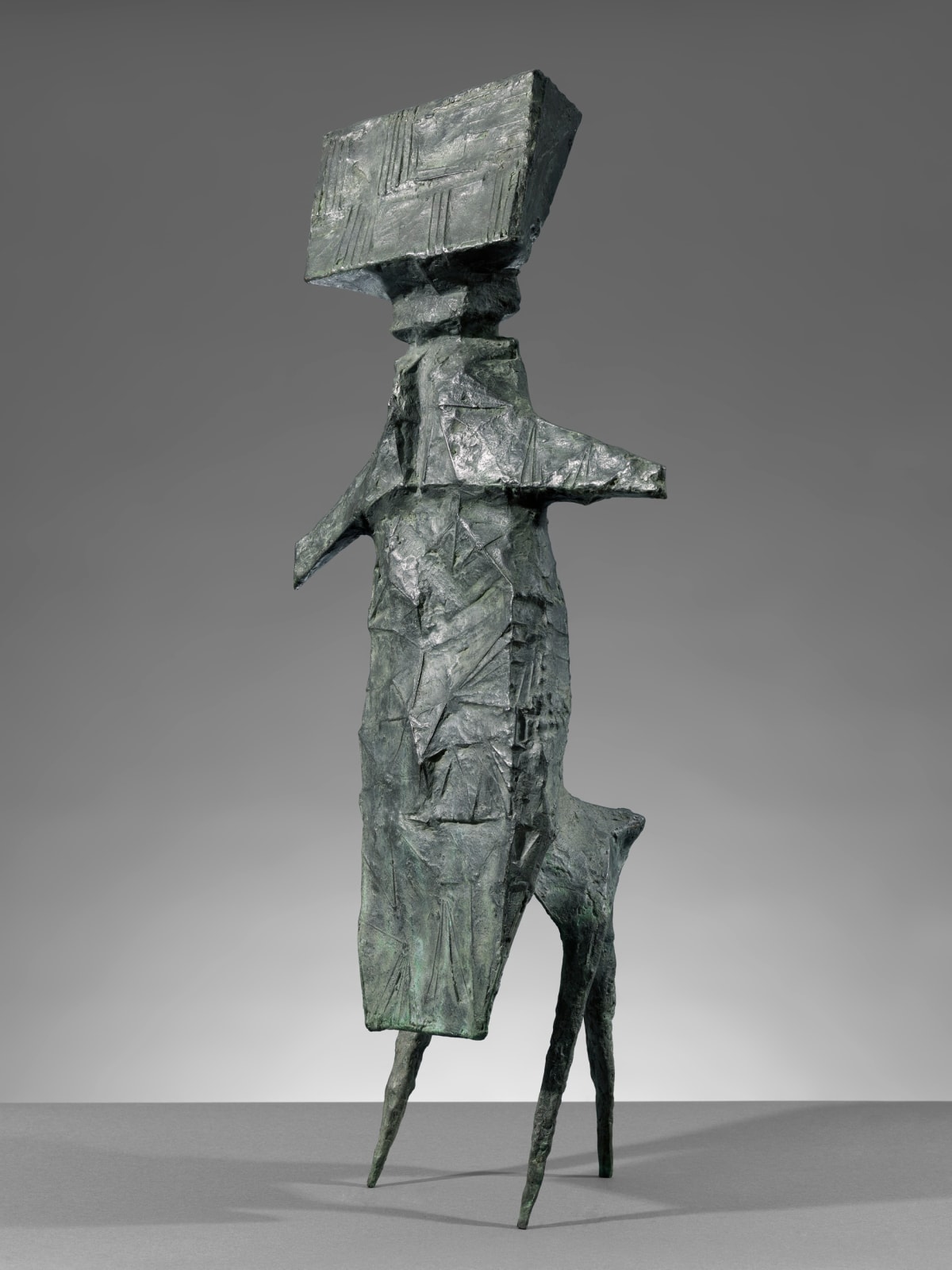Lynn Chadwick
Trog, 1960
Bronze
32 ⅛ x 14 ⅜ x 7 ⅝ in, 81.6 x 36.5 x 19.4 cm
Signed, numbered, dated and stamped with foundry mark '335 2⁄4 1960/LC'
Conceived in 1960-61 and cast before 1969 by Morris Singer Foundry, London as number 2 in an edition of 4
Conceived in 1960-61 and cast before 1969 by Morris Singer Foundry, London as number 2 in an edition of 4
Lynn Chadwick is one of the most important and respected British sculptors of the post-war years. His reputation became fully established after he won the International Prize for Sculpture at...
Lynn Chadwick is one of the most important and respected British sculptors of the post-war years. His reputation became fully established after he won the International Prize for Sculpture at the Venice Biennale in 1956. Four years later, in 1960, Chadwick created ‘Trog’.
‘Trog’ is an exemplar of Chadwick’s exploration of the human figure, a theme that is central to the artist’s work. Chadwick sought to remove the body from naturalistic representation and instead strove for - in his words - “attitude”. While often verging on the animalistic, there is always a human presence implicit in his figures. The sculpture is a variation on the artist’s iconic ‘Watcher’ series he began in 1959. Similarly to a ‘Watcher’, ‘Trog’ is a totem-like mysterious figure, with all marks of the individual removed to create an image that is neither human nor animal, neither male nor female. Here, the large rectangular body and head are balanced on spindly legs, creating a feeling of agitation.
In 1965 Chadwick chose ‘Trog’, alongside three other sculptures, to represent his work in the Tate’s ‘British Sculpture in the Sixties’ exhibition. The exhibition was a display of the most important and exciting British sculptors of the moment, with Chadwick showing alongside some of the greats such as Henry Moore, Barbara Hepworth and Eliabeth Frink.
‘Trog’ is an exemplar of Chadwick’s exploration of the human figure, a theme that is central to the artist’s work. Chadwick sought to remove the body from naturalistic representation and instead strove for - in his words - “attitude”. While often verging on the animalistic, there is always a human presence implicit in his figures. The sculpture is a variation on the artist’s iconic ‘Watcher’ series he began in 1959. Similarly to a ‘Watcher’, ‘Trog’ is a totem-like mysterious figure, with all marks of the individual removed to create an image that is neither human nor animal, neither male nor female. Here, the large rectangular body and head are balanced on spindly legs, creating a feeling of agitation.
In 1965 Chadwick chose ‘Trog’, alongside three other sculptures, to represent his work in the Tate’s ‘British Sculpture in the Sixties’ exhibition. The exhibition was a display of the most important and exciting British sculptors of the moment, with Chadwick showing alongside some of the greats such as Henry Moore, Barbara Hepworth and Eliabeth Frink.
Provenance
Gallery Moos, TorontoPrivate Collection (purchased from above in 1969)



